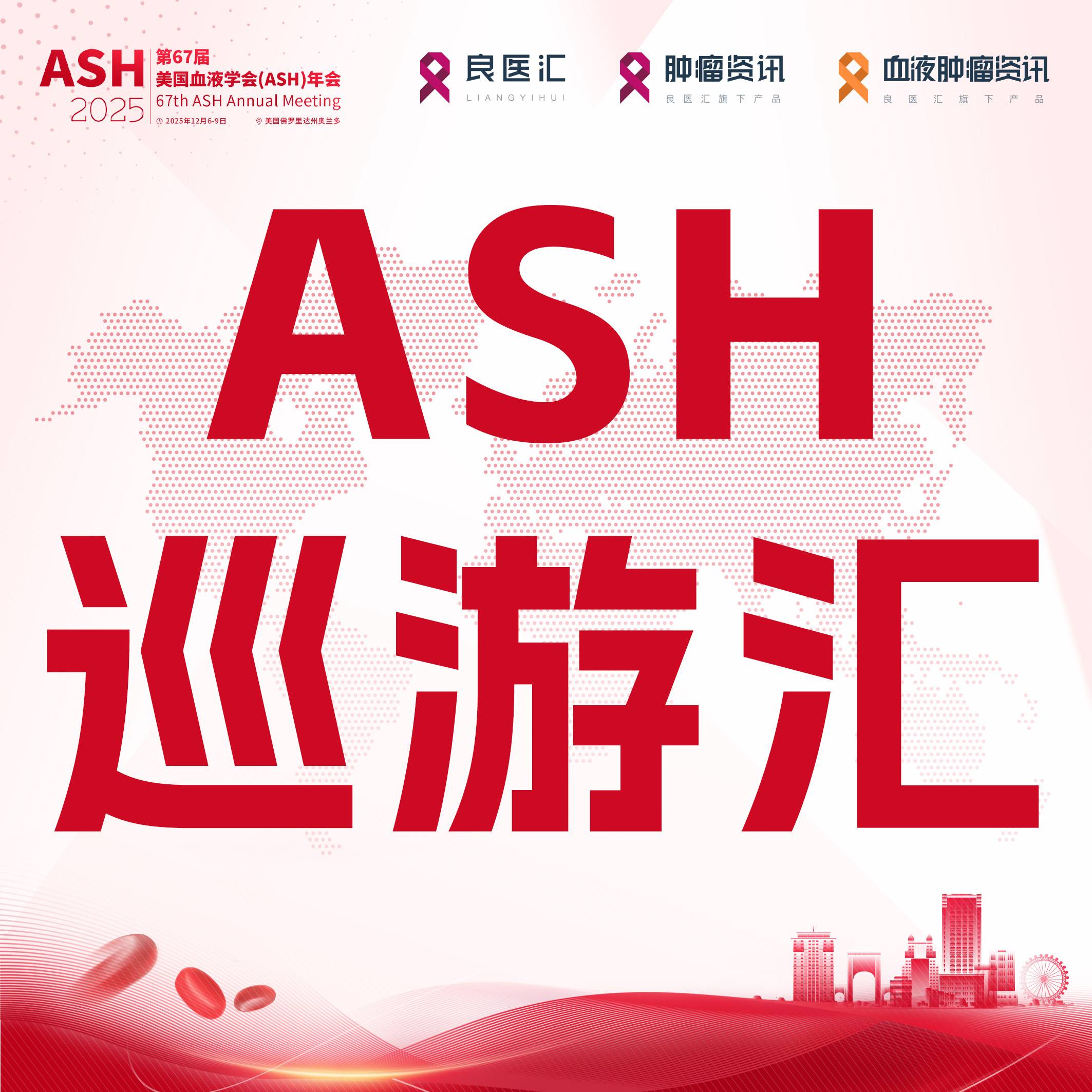今年六月,九份AACR期刊的编辑们重点介绍了两项临床试验的结果,分别为KRAS抑制剂与免疫检查点抑制相结合的临床前数据,以及确定癌症治疗新机会的研究等。一如往常,选出的文章可限时免费在线阅读。
Journal: Cancer Immunology Research
Chemotherapy Induces Tumor-Associated Macrophages that Aid Adaptive Immune Responses in Ovarian Cancer

This issue’s cover, shown here, features an artistic representation of myeloid cells in HGSOC tissue (right). The original image is shown on the left.
Neoadjuvant chemotherapy has been shown to stimulate the adaptive immune system toward an antitumor response, but its effects on the innate immune system have yet to be determined. In this study, researchers investigated the effects of carboplatin and paclitaxel ontumor-associated macrophages (TAMs) in human ovarian tumors, as well as mouse models of ovarian cancer. Although TAMs are generally considered pro-tumorigenic, the authors of this study previously showed that higher levels of TAMs in the stroma surrounding the tumor were associated with improved outcomes. Here, the authors showed, in a cohort of 26 matched biopsy samples, that the number of TAMs within the tumor significantly decreased upon treatment with chemotherapy, while the number of TAMs in the stroma modestly increased. Flow cytometry and RNA sequencing data from additional patient samples suggested a shift in macrophage activation from a tumor-promoting state to a tumor-suppressive state. The shift in number, localization, and phenotypes of macrophages were recapitulated in mouse models, but only in response to carboplatin. When macrophage activation in these mice was blocked, it significantly reduced the survival benefit of carboplatin. The authors suggest that the development of therapies that further boost the antitumor effects of macrophages may provide additional benefit to patients with ovarian cancer. These data were also presented at the AACR Annual Meeting 2021, and this article was featured on the cover of the June issue.
Journal: Clinical Cancer Research (June 1 issue)
Differential Outcomes in Codon 12/13 and Codon 61 NRAS-Mutated Cancers in the Phase II NCI-MATCH Trial of Binimetinib inPatients with NRAS-Mutated Tumors
Mutations in RAS proteins upregulate the MAPK signaling pathway and are key drivers of many cancer types. Preclinical experiments have indicated that NRAS-mutated cancers may be susceptible to inhibition of MEK, another protein in the MAPK pathway. In addition, the phase III NEMO clinical trial found that patients with NRAS-mutated advanced melanomawho received the MEK inhibitor binimetinib had longer progression-free survival and greater overall response rates compared to patients receiving the chemotherapeutic dacarbazine. Based on these preclinical and clinical findings, the authors of this study evaluated the efficacy of binimetinib in patients with other NRAS-mutated malignancies. Forty-seven patients who were enrolled in the NCI-MATCH trial and had refractory solid non-melanoma tumors with NRAS mutations were treated with binimetinib as part of a phase II trial. Approximately 30 percent of patients discontinued treatment due to treatment-related toxicity. A partial response was seen in one patient with malignant ameloblastoma. Another patient with colorectal cancer had an un confirmed partial response, and two additional patients with colorectal cancer had stable disease for at least 12 months. Among patients with colorectal cancer, those with a mutation in NRAS codon 61 had significantly longer overall survival than those with mutations in NRAS codon 12 or 13. The authors conclude that single-agent binimetinib did not show promising clinical activity in patients with NRAS-mutated cancers. This article was highlighted in the June issue.
Journal: Cancer Research (June 1 issue)
GPR15 Facilitates Recruitment of RegulatoryT Cells to Promote Colorectal Cancer
In patients with colorectal cancer, immune-suppressing regulatory T cells (Tregs) are enriched in tumor tissue and peripheral blood. Prior preclinical data suggested that transient ablation of tumor-associated Tregs may foster CD8+ T cell-mediated antitumor immunity. The authors of this study utilized a mouse model of inflammation-induced colorectal cancer to characterize tumor-associated Tregs and to better understand their impact on antitumor immunity. They found that tumor-associated Tregs predominantly originated in the thymus and expressed markers associated with enhanced migration. These markers included the chemoattractant receptor GPR15, which was observed in both mouse and human colorectal cancer cells. Further analysis showed that tumor-associated Tregs that expressed GPR15 had aTh17-like phenotype, which led to the production of the pro-inflammatorymolecules IL17 and TNFα. Depletion of GPR15 led to reduced tumor infiltration of Tregs, enhanced antitumor CD8+ T-cell immunity, and suppressed tumorigenesis. The authors propose that GPR15 may be a potential therapeutic target for colorectal cancer. A related commentary can be found here.
Journal: Cancer Research (June 15 issue)
Inhibition of ATM Induces Hypersensitivity to Proton Irradiation by Upregulating Toxic End Joining
Over half of patients with cancer receive radiotherapy as part of their treatment regimen. In recent years, the use of proton-based radiotherapy has expanded due to its ability to selectively target cancer tissue while sparing normal tissue. Proton radiotherapy has a higher ionizing density and leads to distinct forms of DNA damage, which led researchers to ask whether targeting DNA damage repair pathways could increase sensitivity of cancer cells to proton radiotherapy. In this study, researchers genetically or chemically disrupted key DNA damage proteins in vitro to assess their contributions to DNA damage signaling, DNA repair, and tumor control in response to proton radiotherapy. They found that the DNA double-strand breaks induced by proton radiotherapy preferentially underwent homologous recombination. Inhibition of the ATM kinase prevented DNA resection and led to increased repair through the error-prone nonhomologous end-joining pathway instead of through homologous recombination. As a result, inhibition of ATM, but not ATR, made cells hypersensitive to the denser ionizing radiation of proton radiotherapy. Cancer cells with defects in homologous recombination were also more sensitive to proton radiotherapy. The authors conclude that inherent defects in homologous recombination or inhibition of ATM selectively enhances the efficacy of proton radiotherapy. A related commentary can be found here.
Journal: Cancer Epidemiology, Biomarkers & Prevention
Long-term Patterns of Excess Mortality among Endometrial Cancer Survivors
Endometrial cancer is the fourth most commonly diagnosed cancer among women in the United States. With increasing survivorship, long-term survival estimates are needed. Here, researchers estimated five-year conditional relative survival for over 180,000 women who had been diagnosed with endometrial cancer between 2000 and 2017. At one, five, and 10 years post-diagnosis, five-year conditional relative survival was estimated to be 87.7 percent, 96.2 percent, and 97.1 percent, respectively. Four years post-diagnosis, excess mortality among all sampled endometrial cancer survivors was minimal compared to the general population; however, subgroup analyses revealed lower conditional relative survival for Black women and women with regional/distant disease. Standardized mortality ratios, defined as the observed ratio of mortality in the cancer cohort compared to the general population, decreased over time, but remained consistently higher for non-white women and those with advanced disease. The authors propose that strategies to mitigate mortality disparities will be needed as the number of survivors continues to increase. This article was highlighted in the June issue.
Journal: Clinical Cancer Research (June 15 issue)
Phase I Study of Zotiraciclib in Combination with Temozolomide for Patients with Recurrent High-grade Astrocytomas
There is an unmet need for effective therapies for brain cancers. Preclinical studies in glioblastoma models indicated that the CDK9 inhibitor zotiraciclib, either alone or in combination with the DNA alkylating agent temozolomide, may be an effective therapeutic option. Here, researchers conducted a phase I clinical trial to evaluate zotiraciclib in combination with temozolomide in 53 patients with recurrent glioblastoma or anaplastic astrocytoma. Dose-limiting toxicities includedneutropenia, diarrhea, elevated liver enzymes, and fatigue. There was a significant, but transient, decrease in absolute neutrophil count and neutrophil reactive oxygen species within 12-24 hours of an oral zotiraciclib dose that resolved within 72 hours. The maximum tolerated dose was determined to be 250mg. At four months, 40 percent of patients receiving zotiraciclib plustemozolomide had no disease progression. The authors conclude that zotiraciclibis safe in patients with recurrent glioblastoma or astrocytoma. This study was highlighted in the June 15 issue.
Journal: Molecular Cancer Research
RAF-Mutant Melanomas Differentially Dependon ERK2 Over ERK1 to Support Aberrant MAPK Pathway Activation and Cell Proliferation
Approximately half of all advanced melanomas are driven by mutations in BRAF, a protein in the MAPK signaling pathway. The ERK1 and ERK2 kinases are also found within the MAPK pathway, and while they share many phosphorylation substrates, they can be functionally distinct and are required to varying degrees in different cellular andorganismal contexts. To determine the relative contributions of ERK1 and ERK2 in BRAF-mutated melanoma, the authors of this study analyzed data from three genetic screens performed in cell lines and validated results in further experimentation. They found that the majority of melanoma cell lines were dependent on ERK2, but not ERK1. In addition, the researchers determined that overexpression of ERK1 could compensate for ERK2 loss in BRAF-mutated melanoma, indicating functional redundancy between the kinases. Depletion of ERK2 led togreater suppression of MAPK signaling compared to ERK1 depletion, and treatment with ERK1/2 dual inhibitors led to gene expression changes similar to those seen with ERK2 knock down. Together, the results suggest that ERK2 may drive BRAF-mutated melanoma gene expression and proliferation. The authors propose that ERK2 inhibition could be a potential therapeutic strategy for BRAF-mutated melanoma. This article is highlighted in the June issue.
Journal: Cancer Prevention Research
Serum Levels of Androgens, Estrogens, and Sex Hormone Binding Globulin and Risk of Primary Gastric Cancer in Chinese Men: A Nested Case–Control Study
Gastric cancer is twice as likely to occur in men as in women, suggesting that sex hormones may play a role in its development. Although half of all gastric cancer-related deaths occur in China, most studies implicating sex hormones and sex hormone-binding globulin (SHBG)in gastric cancer have examined primarily white patients, with limited data on Chinese patients. In this study, researchers evaluated the association of sex hormone and SHBG levels with gastric cancer incidence in Chinese men living in Linxian, China. The analyses included 328 men with gastric cancer and 328 matched controls. After adjusting for demographic variables, individuals with the highest serum levels of SHBG were found to have an 87 percent greater risk of developing gastric cancer than those with the lowest levels. While none of the examined sex hormones were found to be significantly associated with overall gastric cancer incidence, some sex hormones, including estrone and free and bioavailable testosterone, were associated with lower risk among men with lower body-mass index. The authors conclude that high levels of SHBG may increase the risk for gastric cancer in Chinese men. They suggest additional studies to evaluate the role of body-mass index on the association between sex hormones and gastric cancer.
Journal: Blood Cancer Discovery
SIRT5 Is a Druggable Metabolic Vulnerabilityin Acute Myeloid Leukemia
Acute myeloid leukemia (AML) is associated with a poor prognosis. Despite the initial high response rates to existing therapies, most patients eventually experience disease relapse, highlighting the need for new and effective therapies. Metabolic disruption is common in cancers, and metabolic pathways have been increasingly explored as potential therapeutic targets for cancer. In this study, researchers identified sirtuin 5(SIRT5), a lysine deacylase involved in cellular metabolism, as a gene essential for AML but not for normal hematopoiesis. Furthermore, they found that SIRT5 was essential for oxidative phosphorylation and utilization ofglutamine, which is essential for AML cells. To target this vulnerability in AML, the authors developed a small molecule inhibitor of SIRT5 and observed that inhibition or genetic depletion of SIRT5 disrupted metabolism and reduced survival and growth of AML blasts. Together, the results indicate that SIRT5 regulates several key metabolic pathways in AML and that SIRT5 inhibition maybe a potential therapeutic strategy for this cancer. These results were also presented at the AACR Annual Meeting 2021. A related commentary can be foundhere.
Journal: Molecular Cancer Therapeutics
The KRASG12C Inhibitor MRTX849 Reconditions the Tumor Immune Microenvironment and Sensitizes Tumors to Checkpoint Inhibitor Therapy
KRAS mutations are commonly observed in non-small cell lung cancer (NSCLC) with high tumor mutational burden, PD-L1 expression, and an immuno suppressive tumor microenvironment. Since these features are associated with response to PD-1/PD-L1 immune check point inhibitors, the authors of this study hypothesized that KRAS-targeted therapy may enhance responses to immune checkpoint inhibition. Using MRTX849, an inhibitor of the KRAS G12C mutant, the researchers found that MRTX849 treatment led to increased expression of MHC class I, reduced expression of immune-suppressing factors, and reduced intratumoral infiltration of immune-suppressing cells in NSCLC mouse models. In addition, MRTX849 treatmentled to tumor regression in immune competent mice, but not in T-cell deficientmice, suggesting that its therapeutic effects may be dependent on T-cellactivity. Tumors progressed after treatment with single-agent anti-PD-1 or MRTX849, but the combination therapy led to durable, complete responses and increased progression-free survival. The authors propose that MRTX849 may sensitize NSCLC to immune checkpoint inhibition. This article was highlightedin the June issue.
Journal: Cancer Discovery
Therapeutically Increasing MHC-I Expression Potentiates Immune Checkpoint Blockade

Suppression of TRAF3 may increase MHC-Iexpression and sensitize cancer cells to immune checkpoint blockade. This study was featured on the issue’s cover, shown here.
Immune checkpoint inhibitors, such as antibodies blocking PD-1 and PD-L1, boost the immune system’s anti-tumoractivity, but not all patients benefit from these treatments. Tumors with low MHC-I expression respond particularly poorly, but it is difficult to therapeutically increase MHC-I expression without also upregulating PD-L1,resulting in a decreased immune response. In this study, researchers performed a CRISPR screen on a mouse melanoma cell line and found that knockout of TRAF3 could boost IFNγ-induced MHC-I expression with no effect on expression of PD-L1. TRAF3 knock out also improved T-cell killing in a co-culture model andsensitized cells to checkpoint inhibitors in a mouse model. The study authors then performed RNA sequencing on TRAF3 knockout cells and found that the top differentially expressed genes were associated with improved prognosis in immunotherapy-treated patients. As no TRAF3 inhibitors currently exist, they compared the transcriptome of the knockout cells to gene expression profiles driven by various drugs. They found that a class of drugs called SMAC mimetics—specifically birinapant—could recapitulate the TRAF3-KO geneexpression profile, including an increase in MHC-I expression with no effect on PD-L1. The authors suggest that drugs like birinapant may improve immuno therapy response in patients with low MHC-I expression. This article was highlighted and featured on the cover of the June issue.
















 苏公网安备32059002004080号
苏公网安备32059002004080号


